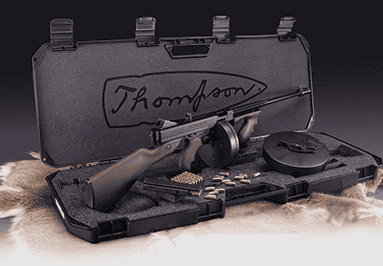It’s (Almost) Christmastime!
Yep, you read the headline right. Sure, we’re in the final days of summer but for a retailer, we need to be putting on our Santa hat and thinking about what all the good girls and boys will be asking ol’ Kris Kringle for 2023.
All kidding aside, now is the time to start rationalizing our business plan for the end of the year. This takes time, work and coordination to have a successful year-end quarter. The adage in retail contends all your profits are made from Black Friday through the end of the year, so let’s look at ways to maximize that potential and have the holiday season leave us as big a pile of cash as possible.
Find A Reliable Benchmark
It all starts by making a measured estimate of what we think our sales volume will be as this is the bedrock from which we’ll make all our other estimates of needs.
So how do we make this season’s sales goal? Use historical data along with market trends. If your store sold $75,000 in products in December last year and you feel this year will be better than last year, you might make an educated prediction you’re trending to sell $80,000 this December.
Factors such as retail trends, an upcoming election, local legislation or simply new “hot” products coming out all might spur you to feel sales growth is inevitable. On the other hand, you might feel the reverse is true and sales are trending downward, and you might only sell $70,000.
The point: make a prediction based on all the facts available to you, draw your line in the sand and use this to make your plans.
“If we have a sales goal, then we need the appropriate inventory to achieve it! “
Inventory Management
What plans can you make off of a simple sales goal? Let’s evaluate.
If we have a sales goal, then we need the appropriate inventory to achieve it! How much inventory do we need? What is the correct type of inventory for the season? How much inventory will we need to buy? How far ahead of time will we need to order it?
Every inventory manager needs to take a keen look at the landscape and set goals for their inventory plan now. Some products may have long lead times and if you wait, you may not get any of those hot products in time. In addition, it’s imperative to set limits on how much inventory you need to buy, so establish a plan on how much cash will you be portioning to each inventory category to maximize the profit potential for the season.
How do we calculate the right level of inventory? A good rule of thumb is to have on-hand inventory (at wholesale cost) be roughly three-to-five times your sales goal. Ergo, if you plan to sell $55,000 in product for December (again, at cost) then you might set your overall inventory budget at somewhere between $165,000 and $275,000 to make sure you aren’t pushing customers to the competition simply because you were out of stock.
Get Staffing Right
Making an inventory plan based on a sales forecast makes sense, but what else can we do with our sales plan to predict and plan for future needs? Staffing! So how does a sales goal affect staffing? Again, we can use our historical data to help make more accurate assessments.
If we look at our sales team and everyone’s sales volume for the same time of year in the past and divide it by the number of hours worked to produce those sales, we can come up with a pretty accurate estimate of sales per hour. Applying this metric to our sales goal for December, we can make an estimate of how many work hours we will need to be properly staffed.
If our sales goal is $75,000 and our sales team averages $100 in sales per hour worked, then we will need 750 work hours covered to achieve our goal. If we currently have three sales team members to cover those hours, they would each need to be working roughly 62 hours per week to meet those goals! As you can see, this is a very important number to consider.
Do we want to pay each of our team members 22 hours in overtime each week or should we consider adding a part-time employee to our team to cover the extra demand? This business-minded choice is simple: hire a part-time employee. The key here is because of our plan, we can start looking for a new employee well ahead of time, have enough time to hire the right person, as well as have the time to properly train him or her for the fast-paced time that is the holiday season. By hiring staff according to plan, we maximize the profit potential of this resource.
“Setting a metric seemingly as simple as a December sales goal now can put several wheels in motion to help you plan to have a December succeed beyond expectations. “
Other Considerations
Other factors that help us make decisions simply by setting a future sales goal extend into things such as marketing decisions, promotions, as well as staff development. From a marketing perspective, if we set our inventory plan ahead of time we can try and leverage the brands we plan to buy to help offset holiday marketing expenses through cooperative funds supplied through our vendors and manufacturers.
If we are scheduled to carry a significant amount of any one brand’s inventory, it gives us firm ground to ask for these co-op dollars.
Regarding staff development, if we know our sales goal along with our inventory plan we can prepare our team to be as effective as possible by making sure our team is well trained on the products we plan to carry, give them sales goals to strive for, an incentive to exceed those goals and build their confidence to succeed based by giving them all the tools they need to thrive.
So yes, setting a metric seemingly as simple as a December sales goal now can put several wheels in motion to help you plan to have a December succeed beyond expectations. The key is to start — and start now!






